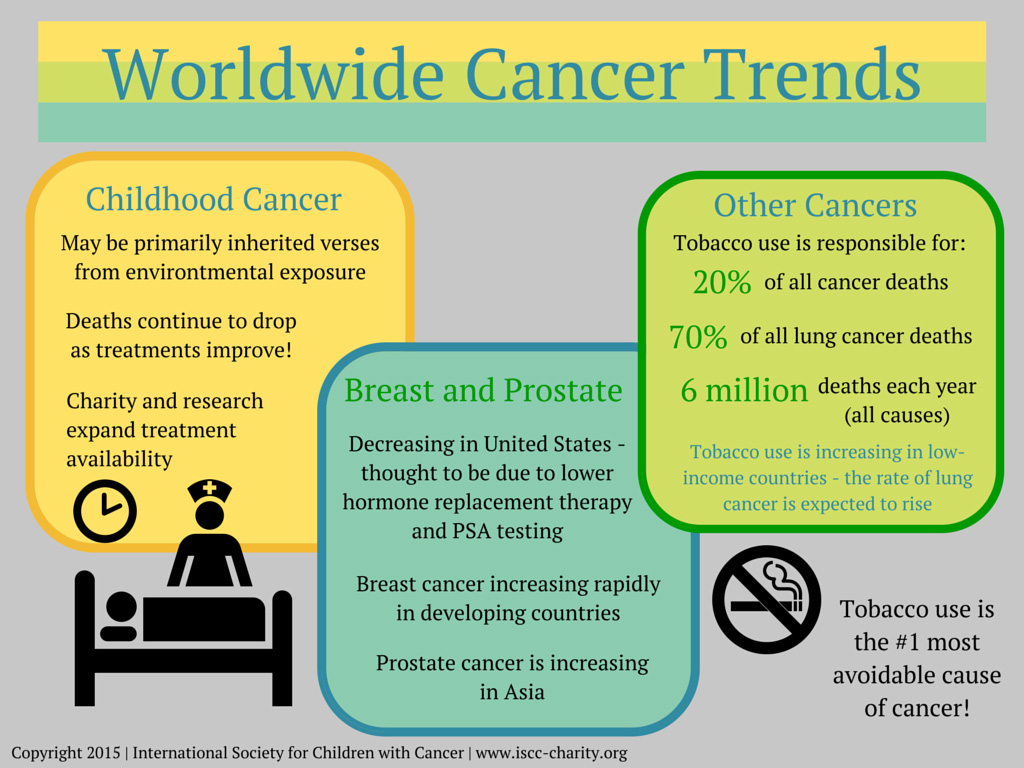Many people in the United States think that increased exposure to pollution, pesticides, and preservatives has increased the incidence of cancer. However, over the last few decades, the incidence of cancer has been declining in higher-income countries and increasing in poorer countries.
Childhood Cancers
Cancers that occur in childhood seem to have a different etiology than cancers of adults – they may be primarily inherited rather than due to environmental exposures. Most studies of childhood cancers find that their incidence remains fairly steady over time. However, deaths due to childhood cancers continue to drop as treatments improve. Treatments are more accessible through the assistance of charity and research that expands on the number of treatments that are available.
Other Cancers
The World Health Organization (WHO) reports that tobacco use is the number one avoidable cause of cancer. Worldwide, tobacco use causes:
- 20% of all cancer deaths
- 70% of all lung cancer deaths
- 6 million deaths (all causes) each year
Tobacco use has been declining in most developed countries. For example, in the United States more than 40 percent of adults smoked cigarettes in 1965 versus only 18 percent in 2012. There is fairly long time-lag between changes in tobacco use and an impact on cancer rates, but already the United States is seeing a decline in lung cancer rates – the incidence of new cases has dropped 1.5 percent per year over the last ten years.
Unfortunately, tobacco use has been increasing in low-income countries. Currently, 80 percent of smokers live in low and middle-income countries. The rates of lung cancer are expected to rise in these countries in the next few decades.
Breast and Prostate
The rates of these breast and prostate cancers have also been declining in the United States. The year 1999 saw 170 cases of prostate cancer per 100,000 men and 135 cases of breast cancer per 100,000 women, while 2011 saw 128 cases of prostate cancer per 100,000 men and 122 cases of breast cancer per 100,000 women.
These decreases are thought to reflect lower use of hormone replacement therapy and PSA testing in the USA. However, in some developing countries, breast cancer cases have been increasing rapidly, perhaps due to changes in reproductive behavior. Prostate cancer rates have also been increasing in Asia, perhaps due to changes in dietary patterns.


